rug size guide living room
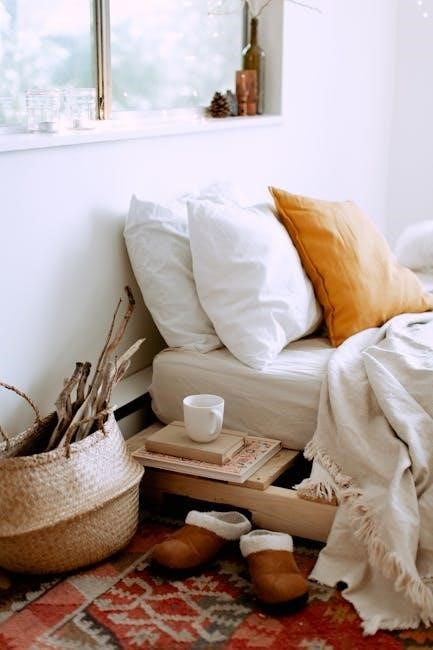
Choosing the right rug size for your living room can elevate its functionality and aesthetic appeal. This guide helps you navigate size considerations, common mistakes, and layout tips to ensure your rug complements the space perfectly.
Understanding the Importance of Rug Size in Interior Design
Rug size plays a crucial role in balancing a room’s aesthetic and functionality. A well-chosen rug anchors furniture, defines spaces, and enhances visual flow. Too small, and the room feels disjointed; too large, and it overwhelms. The right size creates harmony, ensuring furniture fits comfortably while maintaining proportions. It also impacts perceived space—larger rugs make rooms feel grand, while smaller ones cozy. Proper sizing ensures practicality, like fitting under furniture legs, and aesthetic balance, tying together colors and textures seamlessly for a polished look.

Factors to Consider When Choosing a Rug Size
Key factors include room dimensions, furniture layout, personal style, and material considerations. These elements ensure the rug complements the space’s functionality and aesthetic effectively.
Room Dimensions and Layout
Measure your living room’s length and width to determine the ideal rug size. Consider the space where furniture will be placed, ensuring the rug fits comfortably under pieces like sofas and coffee tables. Larger rooms may benefit from 9×12 or 10×14-foot rugs, while smaller spaces might opt for 6×9 or 8×10-foot options. The rug should complement the room’s proportions, creating a balanced and cohesive design without overwhelming the area or leaving it feeling empty.
Furniture Placement and Rug Positioning
Positioning furniture on a rug can enhance the room’s harmony. For sofas, choose a rug that extends at least 8-10 inches on both sides. Place all front legs of chairs and the coffee table on the rug for a cohesive look. In smaller rooms, ensure the rug is large enough to fit under the front legs of key furniture pieces, creating a sense of unity without overwhelming the space. Proper placement ensures comfort and visual balance in the living room.
Personal Style and Aesthetic Preferences
Your rug should reflect your personal style and complement the room’s aesthetic. Consider the color palette, patterns, and textures that align with your decor. For modern spaces, geometric or abstract designs work well, while traditional settings might favor classic motifs. The rug’s material and pile height also impact comfort and appearance, ensuring it suits your lifestyle and enhances the room’s ambiance. Balancing functionality with style ensures the rug becomes a focal point that ties the space together seamlessly.
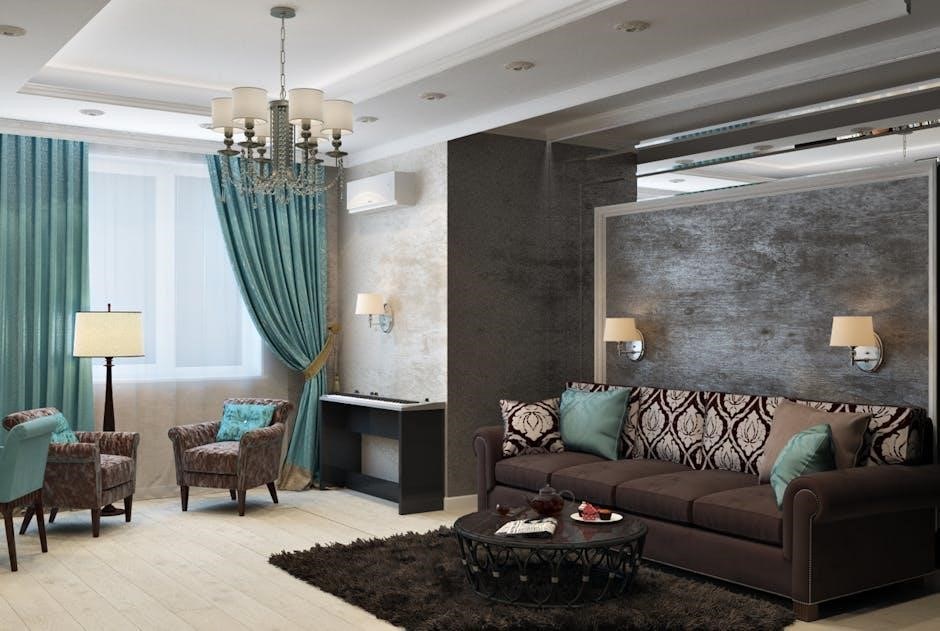
Standard Rug Sizes for Living Rooms
Standard rug sizes for living rooms include 8×10 and 9×12 feet, which are popular for fitting typical spaces. These sizes ensure ample coverage and balance.
Most Popular Rug Sizes: 8×10 and 9×12 Feet
The 8×10 and 9×12-foot rugs are the most popular choices for living rooms. They provide ample coverage, fitting easily under sofas and coffee tables while defining the space. These sizes work well in both small and large rooms, offering a balanced look that complements furniture layouts. For example, an 8×10-foot rug is ideal for medium-sized rooms, while a 9×12-foot rug suits larger spaces or open-concept areas. Both sizes ensure a harmonious and inviting atmosphere, making them versatile for various interior designs;
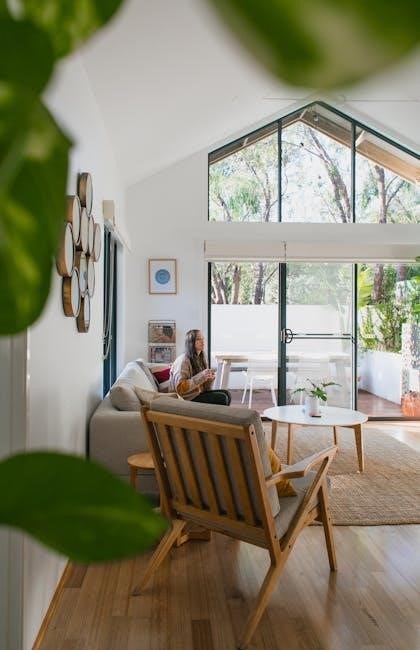
Alternative Sizes for Smaller or Larger Spaces
For smaller living rooms, a 4×6-foot rug is a practical choice, providing enough coverage without overwhelming the space. Larger rooms can opt for 10×14 or 12×15-foot rugs to accommodate expansive layouts. These sizes ensure the rug fits comfortably under furniture, creating a balanced and functional space. Whether cozy or open-concept, alternative sizes help tailor the rug to the room’s unique dimensions, ensuring comfort and style are never compromised.
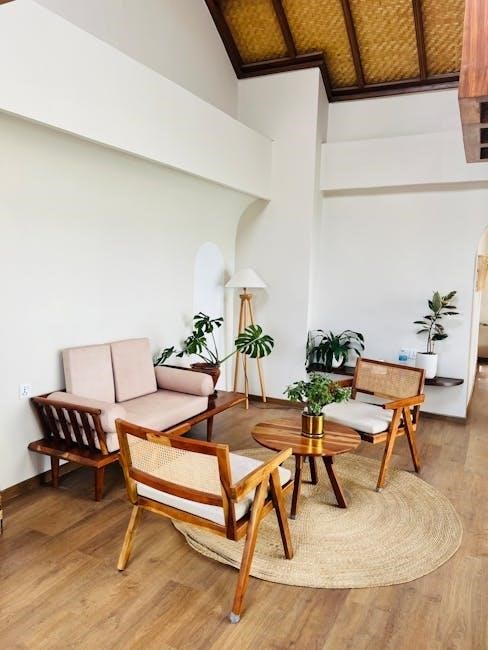
How to Measure Your Living Room for a Rug
Measure your room’s length and width, noting furniture placement to ensure the rug fits seamlessly. Accurate measurements help select the perfect size for your space.
Step-by-Step Measuring Guide
Start by measuring the length and width of your living room using a tape measure. Note the dimensions of your furniture, such as the sofa and coffee table. Determine the area where the rug will be placed, ensuring it fits comfortably under furniture and leaves a border around the edges. Measure doorways and traffic paths to avoid obstructions. Use these measurements to select a rug size that complements the room’s layout and ensures all furniture legs can touch the rug for a cohesive look.
Calculating Space for Furniture Placement
When calculating space for furniture placement, measure the area where the rug will be placed. Ensure the rug is at least 8-10 feet wider than the sofa on both sides. If placing a side table, add a few feet to the width. Consider the border around the rug and ensure it fits under furniture like the sofa and coffee table. The rug should be large enough for all furniture legs to touch it, creating a balanced and cohesive appearance in the room. Properly calculating the space ensures the rug complements the layout without overcrowding.
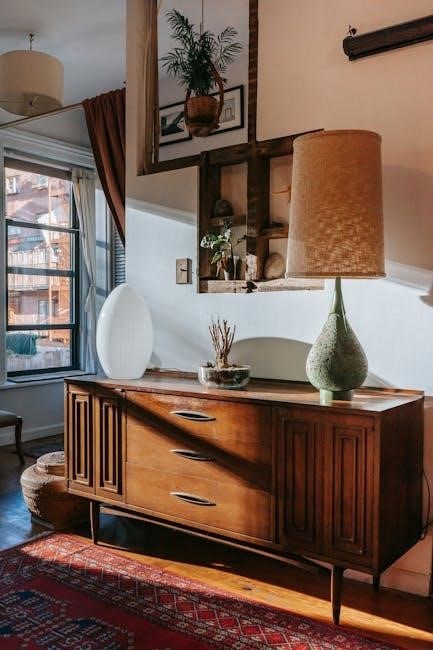
Placing the Rug in Your Living Room
Positioning a rug correctly enhances the room’s harmony. Place it under furniture legs for balance, ensure symmetry, and leave a consistent border around the rug for a polished look.
Positioning the Rug Under the Sofa
Positioning the rug under the sofa requires careful consideration. The rug should extend at least 6-8 inches beyond the sofa’s sides to create a balanced look. If placing the rug under the front legs only, ensure it’s large enough to fit under all furniture legs for stability. For a cohesive appearance, the rug should be longer than the sofa, especially if side tables are present. Proper placement ensures comfort and visual harmony in the room.
Placing the Rug Under the Coffee Table
Placing the rug under the coffee table involves ensuring it is large enough to extend beyond the table on all sides. The rug should be at least 6-12 inches wider than the coffee table to create a balanced look. Positioning the rug so that it extends under the sofa and other furniture legs ensures a cohesive design. This placement prevents the rug from looking too small or out of place, enhancing the room’s overall aesthetic and functionality. Proper sizing is key to achieving a polished appearance.
Ensuring All Furniture Legs Touch the Rug
Ensuring all furniture legs touch the rug creates a balanced and harmonious layout. The rug should be large enough to extend under the front legs of sofas, chairs, and coffee tables. This prevents furniture from appearing disconnected and enhances the room’s cohesion. For smaller rooms, a rug that fits under all furniture legs ensures stability and comfort. Measure your space carefully to select a rug size that accommodates all furniture, achieving a polished and inviting atmosphere in your living room.

Material and Pile Height Considerations
Material and pile height significantly impact comfort, durability, and style. Choose rugs with durable materials like wool or synthetic fibers for high-traffic areas, while silk offers luxury. Pile height affects maintenance and comfort, with low piles ideal for easy cleaning and high piles for softness. Consider lifestyle and preferences when selecting the perfect combination for your living room.
Choosing the Right Material for Your Lifestyle
Selecting the right material ensures your rug complements your lifestyle and space. Wool rugs are durable and ideal for high-traffic areas, while silk rugs offer a luxurious feel. For families or pets, synthetic fibers like nylon or polyester are practical and easy to clean. Natural fibers such as jute or sisal add an organic touch to rooms. Consider factors like maintenance, allergies, and foot traffic when deciding the perfect material for your living room rug.
Understanding Pile Height and Its Impact on Comfort
Pile height significantly influences a rug’s comfort and practicality. Low-pile rugs (less than ½ inch) are durable and ideal for high-traffic areas, offering easy maintenance. Medium-pile rugs (½ to ¾ inch) balance comfort and functionality, while high-pile rugs (over ¾ inch) provide plush softness, perfect for cozy spaces. Consider your lifestyle and room usage when selecting pile height, as it affects both comfort and longevity. The right choice enhances both aesthetics and usability in your living room.
Common Mistakes to Avoid
Choosing a rug that’s too small or too large and ignoring furniture leg placement are common mistakes when selecting a rug for your living room that can disrupt the room’s harmony and functionality.
Selecting a Rug That is Too Small or Too Large
Choosing a rug that’s either too small or too large can disrupt the balance of your living room. A rug that’s too small may make furniture appear disconnected, while an oversized rug can overwhelm the space. Measure your room and furniture carefully to ensure the rug fits comfortably, leaving 6-12 inches of floor space around it for a balanced look. Avoid common mistakes by selecting a size that harmonizes with your room’s dimensions and layout, ensuring functionality and aesthetic appeal. Proper sizing enhances comfort and style, creating a cohesive environment.
Ignoring Furniture Legs Placement
Ignoring furniture legs placement can lead to an unbalanced room. Ensure all front legs of furniture touch the rug for a cohesive look. If the rug is too small, furniture may appear disconnected. Conversely, a rug that’s too large can overwhelm the space; Proper placement ensures stability and harmony, preventing the rug from shifting or the furniture from looking awkward. Measure carefully to align your rug size with your furniture layout, ensuring a polished and functional living room design that enhances both comfort and style.
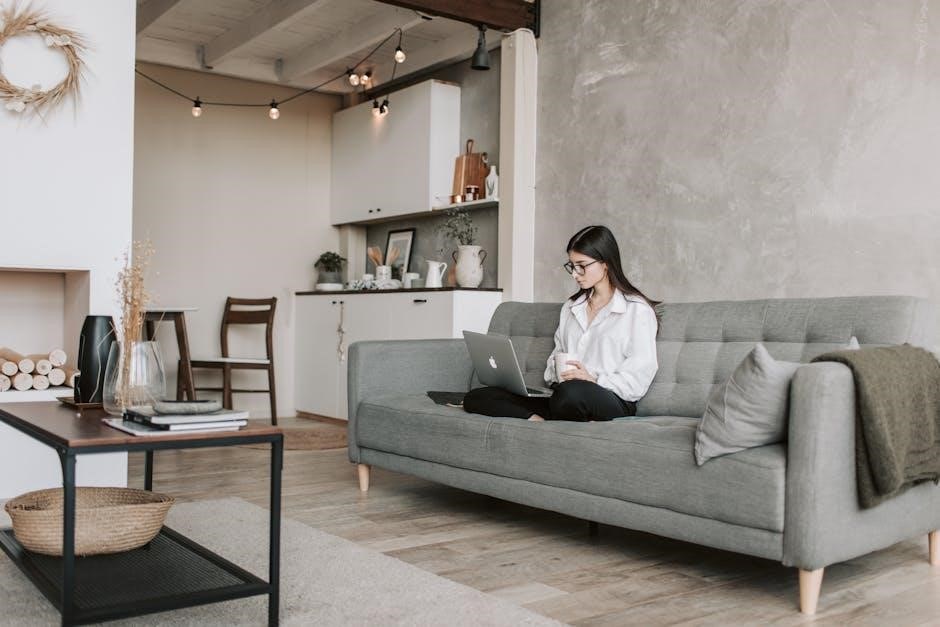
Selecting the right rug size enhances both the style and functionality of your living room. Always measure carefully and position furniture legs thoughtfully for a polished look.
Final Tips for Selecting the Perfect Rug Size
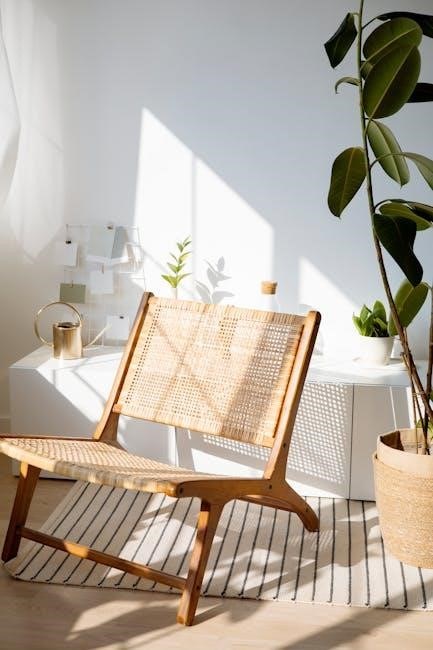
When selecting a rug, prioritize accurate measurements and furniture placement. Opt for standard sizes like 8×10 or 9×12 feet for most living rooms. Ensure the rug extends 8-10 inches beyond the sofa on all sides and that all furniture legs touch the rug for a cohesive look. Consider personal style and room dimensions to balance functionality and aesthetics. Always refer to a rug size chart for clarity and visualize the rug in your space before purchasing.



Leave a Reply
You must be logged in to post a comment.